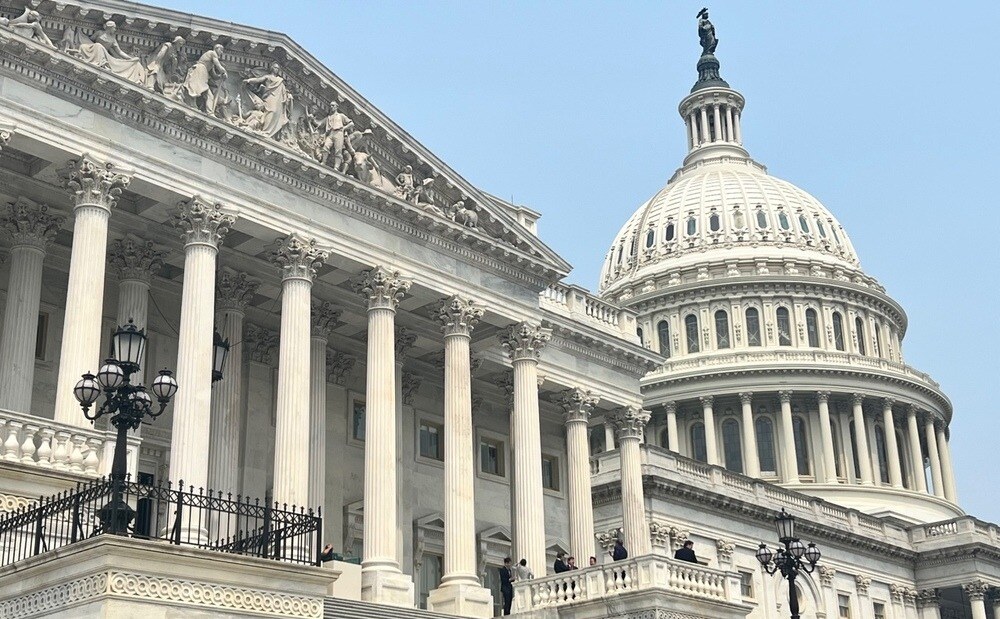The House Ways and Means Committee approved its reconciliation title on May 14 on a party line vote after a 17-hour mark-up. The tax title of the reconciliation bill contains provisions that would permanently extend (i.e., eliminate an expiration date) a raft of tax rules that are set to expire at the end of this year. A few of these extension provisions also modify the expiring rules, including the Section 199A deduction. In addition, the title includes new tax cuts first proposed by President Trump as well as other tax cuts. Offsets are included to ensure that the cost of the title complies with the Committee’s reconciliation instructions. Significantly and in a major victory for NAIFA, the Committee did not attempt to raise revenue from the products and services NAIFA provides to assist American families in achieving financial security.
Key extension provisions include:
- Section 199A: The provision would increase the Section 199A deduction from 20 percent to 23 percent, modify the calculation of the threshold, and allow for an inflation adjustment. This provision does not have an expiration date.
- The proposal also permanently extends individual tax rates and provides for adjustment for inflation and adds an additional year in this calculation for all except taxpayers at the 37% top rate.
- Also extended and modified would be the child tax credit (CTC)—the CTC would be permanently set at $2,000 per qualifying child, but for 2025 through 2028, the CTC would go up by $500, to $2,500 per qualifying child.
- The standard deduction would also be permanently extended but with a temporary (four-year, including 2025) increase of $1500.
- The estate and gift tax personal exemption would go to $15 million, effective in 2026.
- The cap on individual deductions of state and local taxes (SALT) would be made permanent and increased to $30,000 from $10,000 but would phase back down to $10.000 for taxpayers with modified adjusted gross income over $400,000. So-called “workarounds” using passthroughs and other entities or disguised tax payments would be eliminated.
Other expiring tax rules that would be permanently extended (i.e.,, without a new expiration date), are the individual alternative minimum tax (AMT) rules; ABLE account rules; the cap on the deductibility of interest paid on mortgages on principal residences; the elimination of the personal exemption; and the deductions for casualty losses, miscellaneous itemized expenses, commuting expenses, moving expenses, wagering losses, and student loan discharge due to death or disability.
The Committee package also includes certain “pro-family” provisions, including an increase in the refundable portion of the adoption credit, extension and enhancement of the family medical leave credit and an expansion of section 529 accounts, consistent with the bill approved by the Committee previously, which allowed the use of these accounts for expenses involving licensing and other professional education, a change advocated by NAIFA.
There are also extensive improvements to health savings accounts such as HSAs, HRAs and FSAs included in the title. Among the improvements are the following:
- The HSA (health savings account) contribution limit would increase to $4,300 (single)/$8,550 (married) for taxpayers with incomes of $75,000/$150,000 or less.
- Medicare-eligible (Part A) taxpayers would be permitted to contribute to HSAs.
- ACA (exchange-based) bronze and catastrophic plans would qualify as HDHPs (high-deductible health plans), which are required in conjunction with HSAs).
- Both spouses would be able to make catch-up contributions to the same HSA.
- Rollovers from FSAs (flexible spending arrangements) and HRAs (health reimbursement arrangements) to HSAs would be permitted (subject to specific rules).
- CHOICE (custom health option and individual care expense) arrangements would be created. CHOICE accounts would have to comply with minimum essential benefits rules and be funded solely by the employer. Benefits would be restricted to only medical care. It is a two-year program, and based on the number of employees covered, the employer deduction would be $100 times the number of employees enrolled in year one and $50 per employee enrolled in year two.
Noticeably absent from the health package is an extension of the Affordable Care Act’s enhanced premium tax credits. This was the subject of much discussion in Committee, and of a number of failed Democratic amendments.
New tax cut proposals that are priorities for President Trump are also included for four years, beginning in tax year 2025 and expiring at the end of 2028. These include:
- An above-the-line deduction for certain tips for workers in certain industries but only for those with income below $160,000 (tied to the definition of non-highly compensated under section 414),
- An above-the-line deduction for overtime pay (in excess of the regular rate of pay), also limited to non-highly compensated.
- An above-the-line deduction of up to $10,000 for the interest paid on loans for autos assembled in America, phasing out when a taxpayer has modified adjust gross income of $100,000 for single filers and $200,000 for married filing jointly.
- An enhanced senior deduction of $4000, phased out for those making over $75,000 for single/filers and $150,000 for married filing jointly.
- A new tax-favored savings account (“MAGA account”) that parents could establish for children under age 8 and born before January 1, 2024, is created, with a $5000 annual limit on contributions, which must be in cash, and penalties for withdrawals before the age of 18. A pilot program is also established whereby the Federal government will contribute $1000 to a MAGA account for newborns born between January 1, 2024, and December 31, 2028.
Business tax cuts include enhanced bonus depreciation; more generous business interest deductibility, new expensing for structures used in domestic tangible goods production, and restoration of expensing for domestic R&D. Provisions similar to the employer retention tax credit (ERTC) restrictions found in the bill passed by the House last year (H.R. 7024) are also in this title, such as an increase in the penalty for aiding and abetting the understatement of a tax liability by an ERTC promoter.
The title also increases the statutory debt limit to $4 trillion as directed by the House budget resolution instructions.
The package also includes provisions that specify who would be eligible for Medicare (generally, U.S. citizens and legal residents), international tax rule changes, and language allowing scoring credit for tariffs.
A number of other provisions not directly related to insurance and financial services were also included and can be found in the Committee summary linked below.
Revenue: The Joint Committee on Taxation estimates that the Committee’s package (tax provisions only) would reduce revenues by $3.8 trillion over 2025-2034, well within the parameters of the budget resolution’s $4.5 cap if all $2 trillion in spending cuts are achieved, or even if not (see discussion below).
Among the key revenue offsets included in the Committee package are the following:
- Limiting the life of the new tax breaks to 4 years and business provisions generally to 5 years.
- Terminating the Pease limitation on itemized deductions (a 3% cutback of itemized deductions by the amount by which the taxpayer’s income exceeds a certain income threshold) and replacing it with an overall limitation on itemized deductions. The deduction is limited to 35 cents for each dollar of itemized deduction for taxpayers in the highest individual income tax bracket.
- Immediate termination of some, and phase-out of other. of the green energy credits enacted in the Inflation Reduction Act, and tighter restrictions on those not phased out.
- Clarification of the restriction on the deductibility of executive compensation for aggregated entities.
- New taxes on university endowments, an increase in the foundation investment excise tax based on foundation size, an expansion of the unrelated business income definition for name and logo royalties, and an expanded application of the excessive compensation penalty for exempt organizations.
- Limitation on amortization of certain sports franchises.
As noted earlier, the Committee did not attempt to raise revenue from the products and services NAIFA and its partners provide to help ensure the financial security of American families. The current law tax treatment of life insurance, retirement accounts, education and emergency savings, long-term care and disability insurance, employer-provided health insurance, and other financial tools were left intact. In addition, the Committee did not limit the ability of corporations to deduct their state and local taxes (C-SALT).
The key to the scope of the tax package is the outcome of the other committees’ efforts to cut spending. Per the House reconciliation instructions, Ways & Means can craft a reconciliation tax package that will add up to $4.5 trillion to the deficit if the overall reconciliation bill achieves at least $2 trillion in savings. That is $500 billion more than the $1.5 trillion the budget resolution requires the House committees to cut. To the extent the spending savings fall short of $2 trillion, the tax package scope would have to shrink by an equal amount. The current $3.8 price tag for fiscal years 2025-2034 means that the Committee is within its reconciliation instructions, and in fact, has some flexibility to make changes, should they be necessary to garner votes before floor action. For instance, the individual SALT cap provision is still a point of contention and could be modified, likely increased, before floor action.
Prospects: The reconciliation process is fraught. And what is happening now is just what the House is doing. Still to come is the Senate package. Some priorities in the Senate are likely to differ from those in the House, even though House and Senate tax writers, budgeteers, and leaders are in close communication as this process unfolds.
Washington insiders (on and off the Hill) say that odds are that Congress—possibly with the help of President Trump’s encouragement of wavering lawmakers—will work through all this controversy and enact a substantial tax package prior to year-end. Speaker Johnson continues to say he wants to put the reconciliation bill on the floor next week, after Budget and Rules Committee action later this week, meeting the President’s Memorial Day deadline at least for the House. But it is not yet clear if that will happen. So, the timing of this package is still an unanswered question.
A Ways and Means Committee staff-prepared section-by-section of its title can be found here.
NAIFA Staff Contacts: Diane Boyle – Senior Vice President – Government Relations, at dboyle@naifa.org; or Jayne Fitzgerald – Director – Government Relations, at jfitzgerald@naifa.org.






.png?width=600&height=90&name=Support%20IFAPAC%20%20(600%20%C3%97%2090%20px).png)
